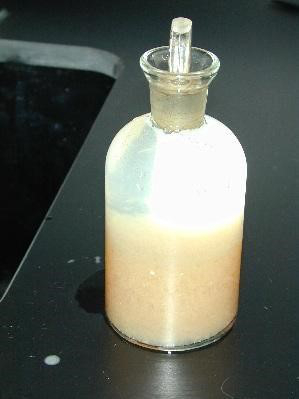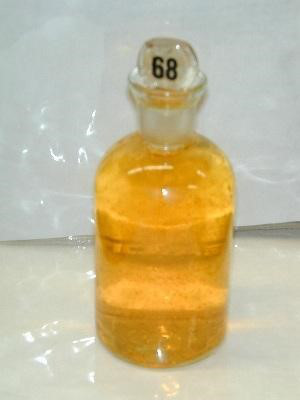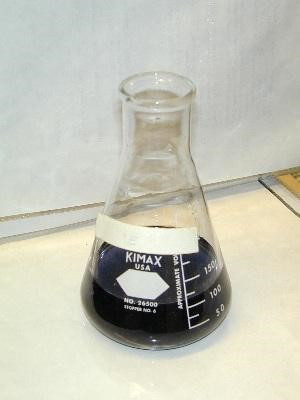Dissolved Oxygen in Surface Water
Source: Laboratories of Margaret Workman and Kimberly Frye - Depaul University
Dissolved oxygen (DO) measurements calculate the amount of gaseous oxygen dissolved in surface water, which is important to all oxygen-breathing life in river ecosystems, including fish species preferred for human consumption (e.g. bluegill and bass), as well as decomposer species critical to the recycling of biogeochemical materials in the system.
The oxygen dissolved in lakes, rivers, and oceans is crucial for the organisms and creatures living in it. As the amount of dissolved oxygen drops below normal levels in water bodies, the water quality is harmed and creatures begin to die. In a process called eutrophication, a body of water can become hypoxic and will no longer be able to support living organisms, essentially becoming a “dead zone.”
Eutrophication occurs when excess nutrients cause algae populations to grow rapidly in an algal bloom. The algal bloom forms dense mats at the surface of the water blocking out two essential inputs of oxygen for water: gas exchange from the atmosphere and photosynthesis in the water due to the lack of light below the mats. As dissolved oxygen levels decline below the surface, oxygen-breathing organisms die-off in large amounts, creating an increase in organic matter. The excess organic matter causes an increase in the oxygen-breathing decomposer populations in the benthic zone, which further depletes the remaining dissolved oxygen levels during the metabolic decomposition activity. Once the oxygen levels become this low, mobile oxygen-breathing species (e.g. fish) will move away, leaving no aerobic life in the water and creating a dead zone.
The Azide-Winkler titration method uses titration to determine the concentration of an unknown in a sample. Specifically, sodium thiosulfate is used to titrate iodine, which can be stoichiometrically related to the amount of dissolved oxygen in a sample.
1. Sample Dissolved Oxygen Measurement
- At the water collection site, use a calibrated pipette to add 2 mL manganous sulfate to a clear 300-mL BOD bottle filled with the sample water. Be careful not to introduce oxygen into the sample by inserting the pipette tip under the sample surface and carefully dispensing manganous sulfate. This will avoid creating bubbles until the sample is “fixed” and prevents change to the dissolved oxygen concentration.
- Using the same technique, add 2 mL alkal
A dissolved oxygen level of 6 mg/L is sufficient for most aquatic species. Dissolved oxygen levels below 4 mg/L are stressful to most aquatic animals. Dissolved oxygen levels below 2 mg/L will not support aerobic aquatic life (Figure 5).
The maximum amount of oxygen that can be dissolved in water varies by temperature (Table 1).
DO measurements in mg/L are converted to % saturation using water temperature and the conversion chart be
Slow-moving rivers are particularly vulnerable to low DO levels, and in extreme cases, these DO levels can lead to hypoxic conditions, creating “dead zones” where aerobic life is no longer supported by a body of water (Figure 7). Once plants and animals die-off, the build-up of sediment that occurs can also raise the riverbed, allowing plants to colonize over the water and could lead to the loss of the river all together (Figure 8). Surface waters at higher altitudes are also
Skip to...
Videos from this collection:

Now Playing
Dissolved Oxygen in Surface Water
Environmental Science
55.3K Views

Tree Identification: How To Use a Dichotomous Key
Environmental Science
80.8K Views

Tree Survey: Point-Centered Quarter Sampling Method
Environmental Science
49.1K Views

Using GIS to Investigate Urban Forestry
Environmental Science
12.2K Views

Proton Exchange Membrane Fuel Cells
Environmental Science
21.9K Views

Biofuels: Producing Ethanol from Cellulosic Material
Environmental Science
52.7K Views

Testing For Genetically Modified Foods
Environmental Science
88.9K Views

Turbidity and Total Solids in Surface Water
Environmental Science
35.6K Views

Nutrients in Aquatic Ecosystems
Environmental Science
38.4K Views

Measuring Tropospheric Ozone
Environmental Science
26.2K Views

Determination Of NOx in Automobile Exhaust Using UV-VIS Spectroscopy
Environmental Science
29.9K Views

Lead Analysis of Soil Using Atomic Absorption Spectroscopy
Environmental Science
124.5K Views

Carbon and Nitrogen Analysis of Environmental Samples
Environmental Science
29.0K Views

Soil Nutrient Analysis: Nitrogen, Phosphorus, and Potassium
Environmental Science
214.9K Views

Analysis of Earthworm Populations in Soil
Environmental Science
16.4K Views
Copyright © 2025 MyJoVE Corporation. All rights reserved



